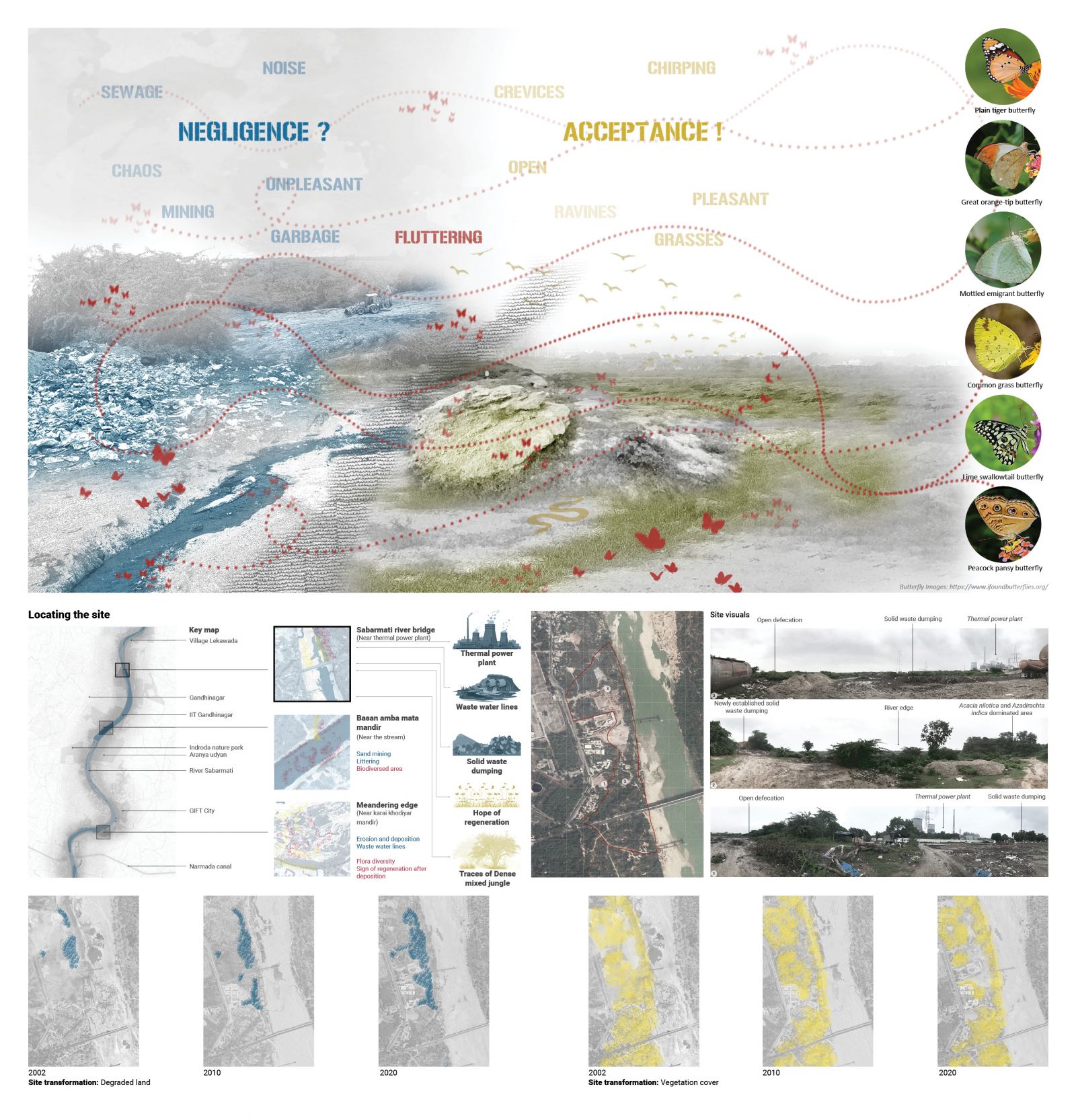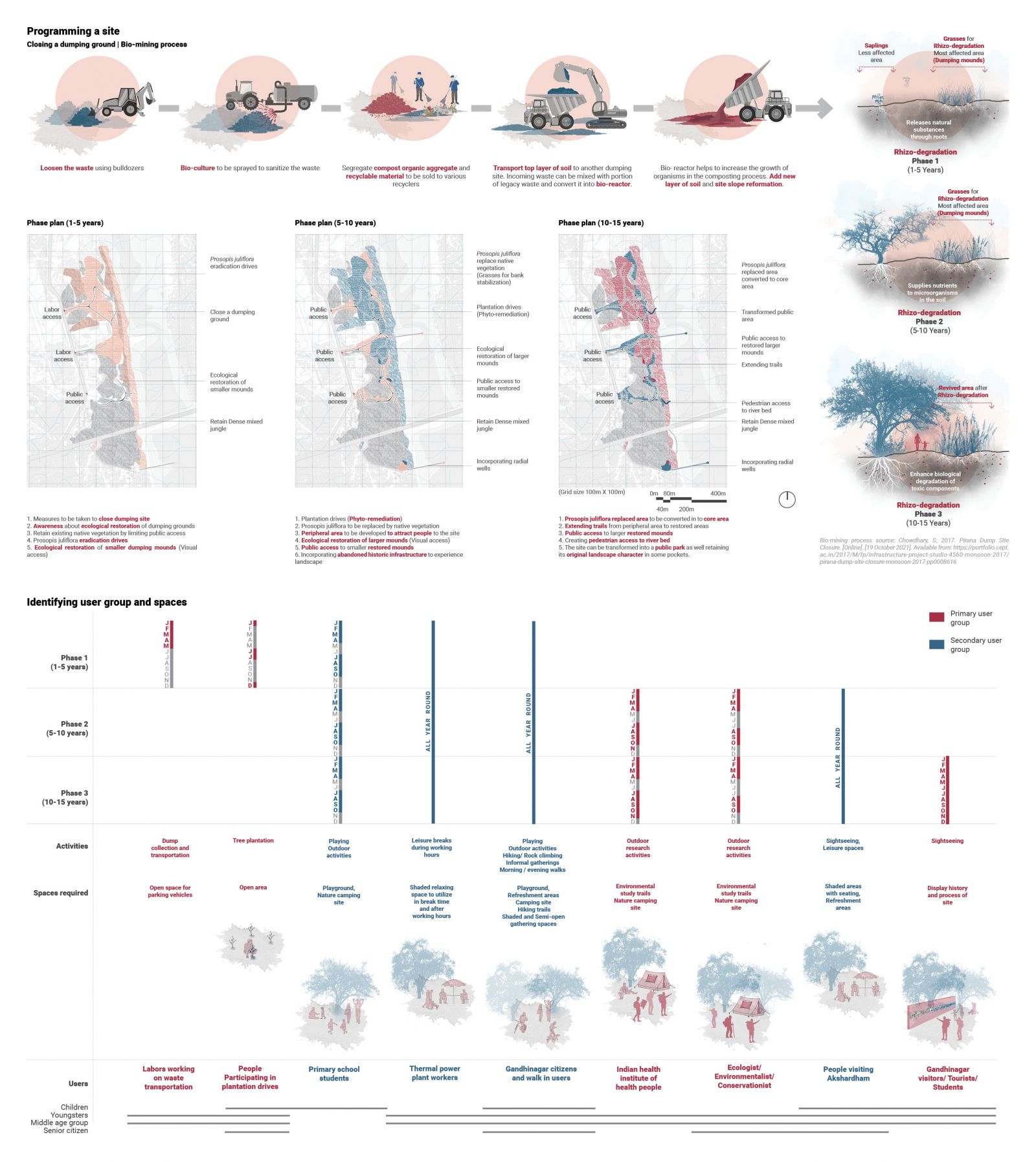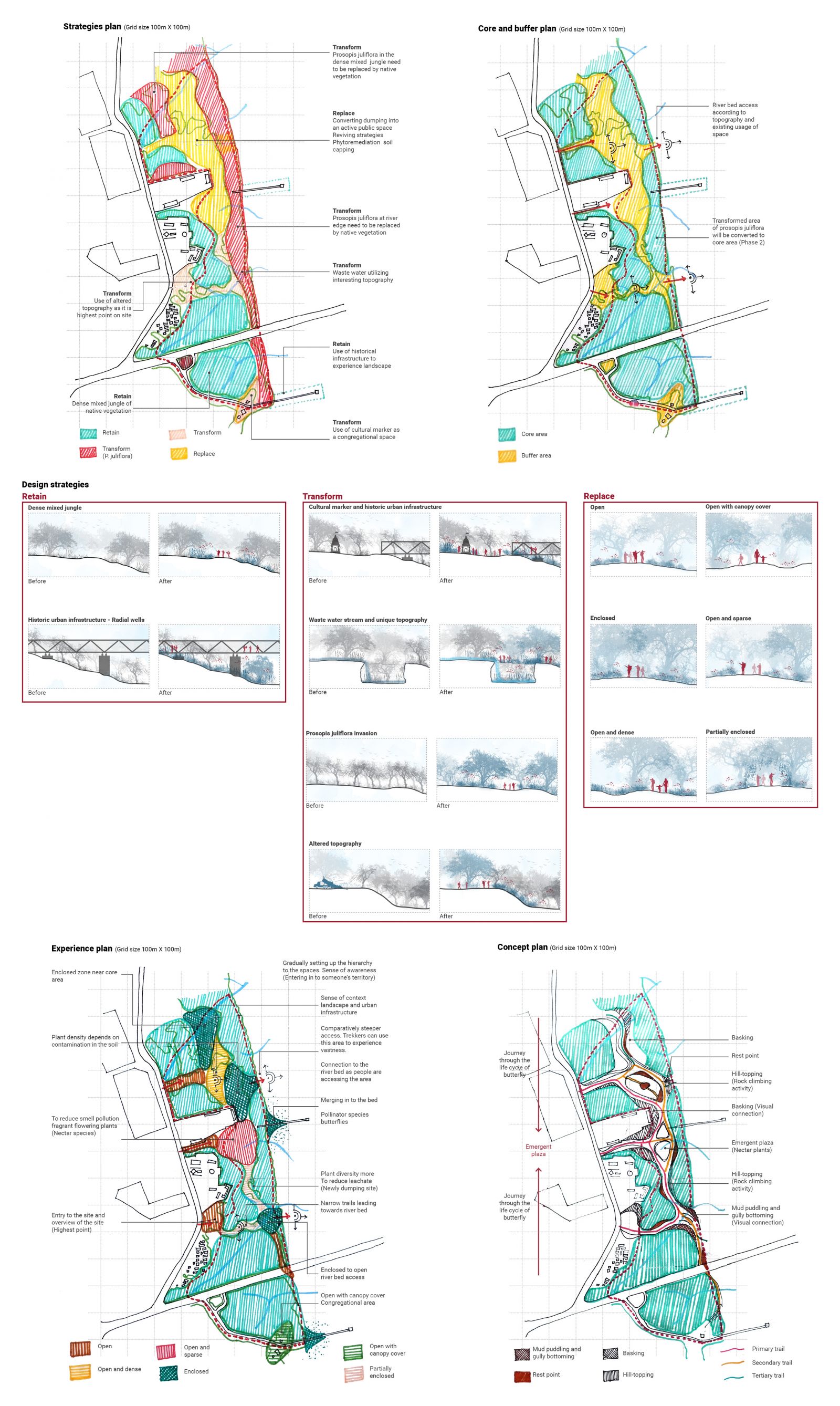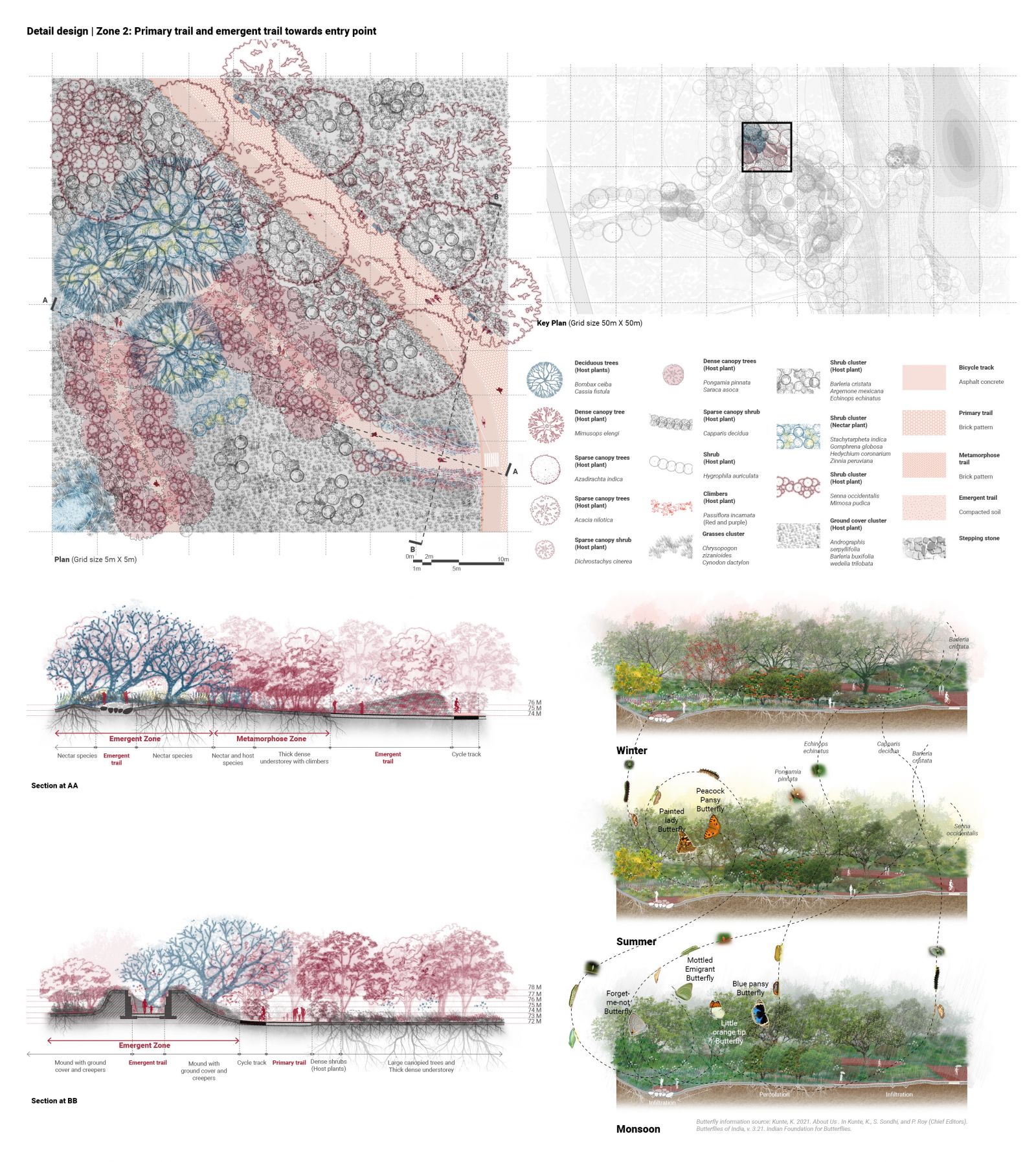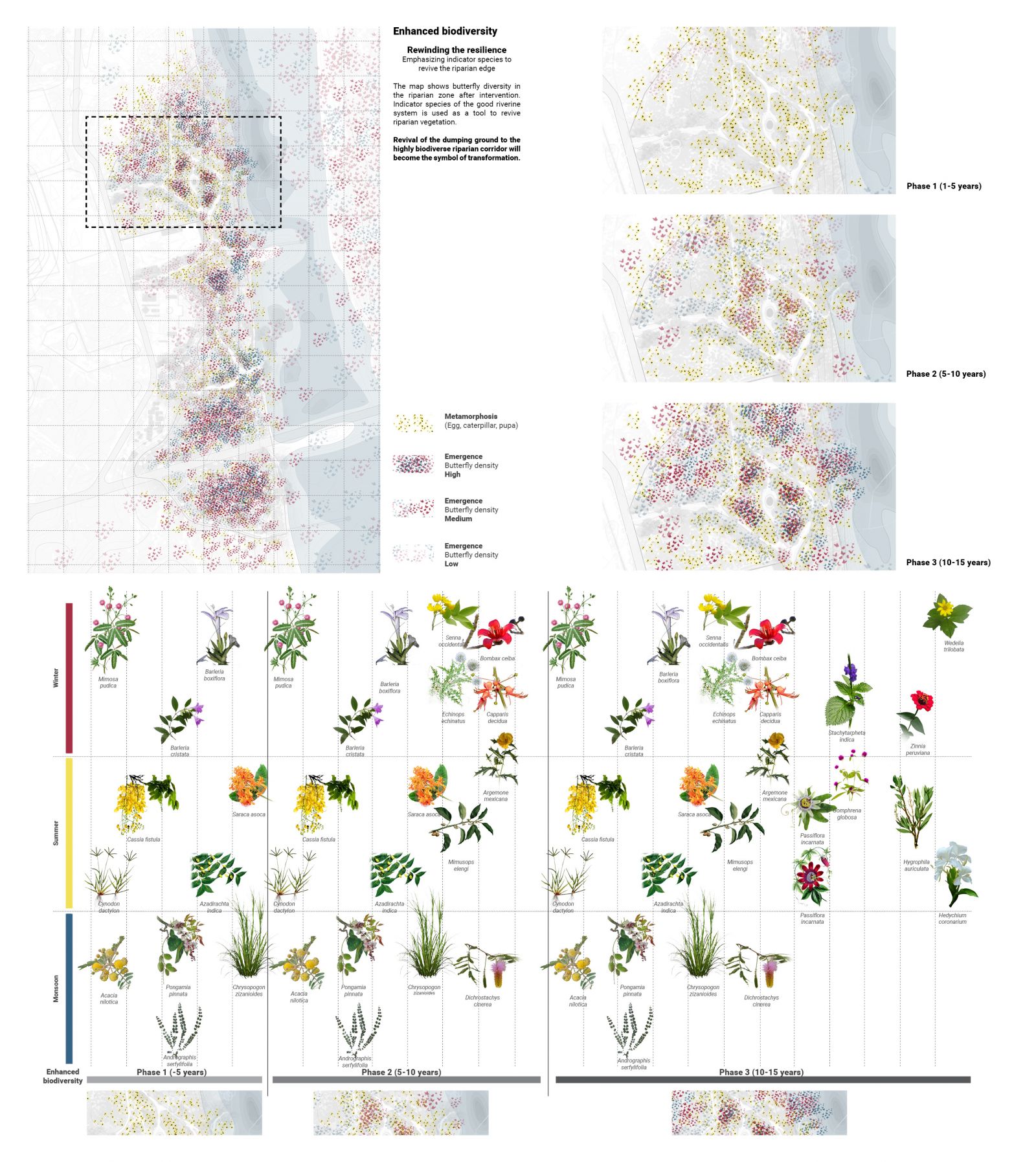- Student KALANTRE SANIKA RAJAN
- Code PLA20306
- Faculty Architecture
- Tutor/s Chandrani Chakrabarti,Priyal Shah
- TA Shreshtha Waghray
Emphasizing indicator species to
revive the riparian edge
The river Sabarmati being in an urban context has diverse edge conditions. It is interesting to study how the landscape and urban fabric coexist. Do they coexist? Or are there loopholes at micro conditions?
The study started by looking at a site adjacent to the thermal power plant. The selected piece of land experiences urban-industrial fabric on one edge and river as a natural entity on the other edge. It experiences maximum forms of direct and indirect human-induced disturbances such as solid waste dumping, wastewater lines, an industrial area next to it. Considering urban needs as well as urgency to protect the river, what can be done?
The riparian zone is an important interface between land and river. It partially protects the river from the impact of adjacent land uses. Strengthening the riparian corridor will be beneficial to the river. The project looks at disturbances experienced by the riparian edge of river Sabarmati over the years. It aims to ecologically revive the disturbed site into an active public space by emphasizing indicator species (Butterflies) of a healthy riverine system.
Revival of the dumping ground to the highly biodiverse riparian corridor will become the symbol of transformation.
